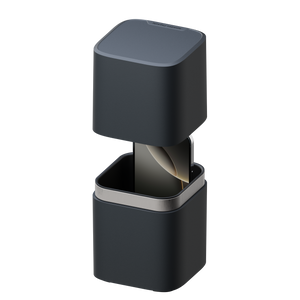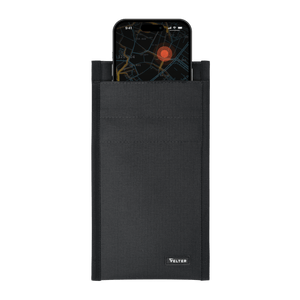Understanding the Impact of Mobile Phone Radiation: A Comprehensive Guide

What is Mobile Phone Radiation?
Mobile phones, like many other electronic devices, emit non-ionizing radiation. This form of radiation, while different from the ionizing radiation emitted by medical imaging devices and nuclear reactions, can still affect the human body under certain conditions.
Cell phones operate using radio waves, a form of non-ionizing radiation. These waves transmit the data to and from your phone, enabling you to make calls, send messages, and use data. Despite being non-ionizing, meaning it lacks the energy to remove tightly-bound electrons from atoms, these waves can still cause certain health effects.
 Types of electromagnetic radiation. Source: University of Bergen
Types of electromagnetic radiation. Source: University of Bergen
Can Mobile Phone Radiation Cause Cancer?
One of the most pressing questions surrounding mobile phone radiation is its potential link to cancer. In 2011, the International Agency for Research on Cancer (IARC), a part of the World Health Organization (WHO), categorized mobile phone radiation as "possibly carcinogenic to humans," following studies that found an increased risk for glioma, a type of brain cancer, among heavy mobile phone users. It's important to note that "possibly carcinogenic" doesn't necessarily mean that mobile phones do cause cancer; it suggests a possible link that needs further study.

Mobile Phone Radiation Standards
There are standards and guidelines in place to ensure the safe use of mobile phones. Each mobile phone model is tested for its Specific Absorption Rate (SAR), a measure of the rate of absorption of radiofrequency energy by the body. No phone will reach the market until the manufacturer proves its electromagnetic safety. However, even if a phone meets all the norms, manufacturers often remind users to avoid direct contact with the body and use wired headphones or loudspeakers whenever possible.
 The Phones Emitting the Most Radiation. Source: Statista.com
The Phones Emitting the Most Radiation. Source: Statista.com
Misconceptions and Misinformation about Mobile Phone Radiation
Health concerns create fertile ground for various scams and misinformation, and the issue of electromagnetic radiation is no exception. As 5G networks continue to roll out globally, false information has been proliferating. It's important to note that the level of exposure to the human body from 5G networks does not differ from other cellular standards. It may still cause tissue heating and is considered a potential carcinogen, but it does not carry previously unknown consequences. No substances or other things, like creams, rocks, or plants, can protect against electromagnetic radiation.
Minimizing the Impact of Electromagnetic Radiation
While the abundance of false information and scams does not imply that there aren't effective ways to protect oneself from electromagnetic radiation. Here are a few simple and practical tips:
- Choose residences further away from cell towers and power lines.
- Avoid keeping the phone close during sleep.
- Men should avoid carrying the phone in their pockets due to potential effects on reproductive health.
- If possible, turn off Wi-Fi at night and consider using a wired Ethernet router.
- Use shielding accessories that block radio waves physically (Faraday cage).
Shielding cases and the Faraday capsules are excellent choices for those seeking to minimize their exposure to electromagnetic radiation. They work by shielding the signal rather than blocking it with a stronger one, which could increase the harmful radiation dose.

Conclusion
Mobile phone radiation, while potentially harmful, shouldn't deter us from using technology. Instead, it calls for informed decision-making and the adoption of basic digital hygiene practices. Understanding the impact of these devices on our health is as important as leveraging their benefits.
Despite the declared safety of current radiation levels, it's wise to minimize exposure where possible. Precautions like keeping the phone at a distance, using hands-free devices, and choosing texting over calling can help. Radiation-shielding accessories such as shielding cases and the Faraday capsules can also be beneficial.


